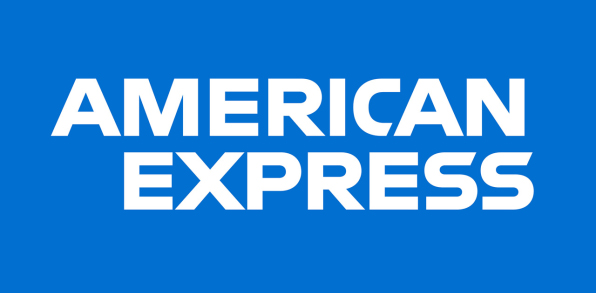The term “productivity” has become popular among businesspeople in recent years. Success in life, whether at work or home, depends on our ability to get things done quickly and well. Workplace productivity is important, yet many of us face challenges that make it harder to get things done.
Fortunately, technology offers robust solutions to many common productivity problems. In this blog, we’ll explore key productivity challenges and how modern tools can help you overcome them to achieve your goals.
Productivity Problems Every Remote Employee Encounters
Lack of communication
One significant area for improvement in workplace efficiency is communication. Team members can only work together or finish projects if they communicate with one another.
In addition, they need effective communication, such as feedback from managers, to comprehend the organization’s objectives and their role in achieving them.
However, employees may get overwhelmed or distracted if there is excessive communication. It becomes even more critical when remote or hybrid team members cannot meet face-to-face. It’s critical to figure out how to communicate effectively without overwhelming them with information that is either contradictory or otherwise difficult to process.
Low employee engagement
Employees who are engaged generally exhibit greater overall productivity than those who are disengaged.
Employees who see their work as insignificant are more inclined to exhibit subpar performance or resign from their positions entirely. They are also less inclined to propose novel solutions or to volunteer for duties at which they may excel.
Decentralized software
Forget about other groups. Other applications the company does not offer are being used across various teams.
The explanation for why this happens in the first place is simple. Various teams or departments need tools, which the company can only sometimes provide. First, the company could not even be aware that its workers have installed unauthorized applications, and this information needs to be shared.
Always refer to the licensed applications offered by your employer to avoid utilizing possibly inferior software that can slow you down instead of helping you. If you must install an app from an external source, be sure it does not violate any rules established by your company.
Extended work schedules and overlaps
Flexibility is valued in today’s workplace, where it matters most. However, being too flexible with your schedule often leads to problems with how your work progresses throughout the day.
You could find yourself putting things off, which might waste valuable time that could be spent on other things. An unexpected extension in that meeting, this project, or a release schedule may send anybody into a vicious cycle of procrastination and, perhaps, turmoil, even if it’s not always terrible.
Set priorities. Ensure you’ve taken care of the most important things, and only then will you go on. When you have more important things to accomplish, you may put off the less important things until later or if they can be done fast. Although some of us find it useful, multitasking isn’t something you should commit to if it often leads you to neglect what’s essential.
Multitasking and distractions
Distractions and multitasking are another problem that lowers productivity at work. Despite appearances to the contrary, they are interrelated. Employees who multitask constantly move between several jobs, never giving their undivided attention to a single one. It is very uncommon for employees to fall short of their responsibilities due to interruptions from colleagues, conflicting agendas, or even personal matters.
Poor employee training
Employees who need to be informed of how to use their equipment or accomplish their work will face issues related to productivity. Employees will fear the potential negative repercussions of admitting that they do not know how to use a tool or understand a policy. It can result in them squandering time by attempting to understand the system independently or avoiding it altogether.
Technological Tools That Improve Productivity
Technology has been a significant tool in enabling businesses to maintain their competitiveness in both domestic and international markets. Let us know the subset of technological tools that enhance enterprises’ productivity.
Project management tools
Project management tools can help your team manage project stages, duties, deadlines, and other productivity objectives. However, the sheer number of methods and solutions available for project management can be overwhelming.
Knowing project management software’s inner workings can help determine whether it can fulfill your needs. Specific software development teams may employ Agile methodology to improve team performance, customer delight, and project flexibility.
Cloud-based Collaboration Tools
Cloud-based collaboration software benefits the scattered workforce by offering several simple communication alternatives. Managers can more easily handle projects remotely and asynchronously when they have features such as file sharing, digital whiteboards, and other capabilities.
Also, several managers have said that the virtual office space has helped minimize unplanned meetings and provided employees more time for work since they do not have to drive.
One of the recommended collaboration tools in this growing digital world is Microsoft Office Home 2024.
Microsoft Office Home 2024 offers powerful collaborative tools, such as Word and Excel, with real-time co-authoring capabilities. This feature allows multiple team members to edit documents or spreadsheets simultaneously while tracking changes.
Microsoft Teams integrates smoothly with Office Home 2024, simplifying team communication with group chats, video calls, and file-sharing capabilities. For businesses requiring visual communication, Microsoft Whiteboard, included in the suite, provides a virtual canvas for brainstorming sessions, ensuring creative collaboration without geographic barriers.
Analytical Tools
Strong business intelligence (BI) technologies extract raw data from many business systems and store it in a data warehouse repository for analysis and review. These tools leverage artificial intelligence and machine learning methods in programs like Microsoft Excel, Tableau, and Power BI.
Data analytics tools transform raw data into valuable information with insights into company trends and display it in an easy-to-understand dashboard or report style. Managers can make better judgments for their companies when they have such data. Data analytics tools give managers a more comprehensive view, allowing them to make more effective choices and seize more profitable possibilities.
Customer Relationship Management Systems
CRM software facilitates overhead reduction and allows sales personnel to focus on consumers interested in purchasing while also allowing them to think creatively. Employees can utilize notes and other information to enhance their relationships with customers and maintain the organization of their processes. Your staff is relieved of the responsibility of responding to frequently asked queries by chatbots, which also optimizes consumer convenience.
Gamification Tools
Gamification is a widely used approach to enhancing productivity in any department. The intention is to incorporate training, objectives, and daily responsibilities into activities that offer points or rewards to personnel who meet specific figures or achieve the best results. Gamification can maintain employees’ motivation and engagement in their pursuit of success.
Human resource technologies
Human resource tools can also enable a wide range of HR functions, such as recruitment and training, among others, in the administration of employees. Records of incidents, forms, and scenarios may be compiled and kept to keep HR personnel aligned.
Position criteria may be centralized inside an internal HR software system to streamline the hiring process and even capture interviewers’ notes for a whole picture of the hiring team’s rationale regarding the choice.
Other Ways that May Enhance Productivity
Businesses cannot achieve success without productivity; however, they may be productive without success if they generate improper products or tools. Thus, companies must ensure a continuing demand for their products or services before implementing technological innovations.
Nonetheless, while technology may enhance productivity, organizations must ensure that effective non-technical practices are already established in the workplace to optimize the use of technological tools:
- Keep things simple.
- Avoid multitasking.
- Set reminders.
- Review your goals
- Minimize time-wasting processes
Using these best non-technical business processes will only boost the productivity value of technological tools. Management should also keep particular pain points in mind when choosing additional tools.
Start by thinking about the most important things. You can continually improve things, but working on a few things at a time is best. Once things become more accessible and more work is done, you can start looking for more minor problems so that things keep getting better.
But remember that needs change. Sometimes, solutions that work great one day might not be the best ones a year or two from now. At this point, keeping the talk going and working toward the best rules and procedures is essential.
Final Thoughts
Productivity problems are common but no need to haunt you. Use the full power of technology to drive away obstacles and create a more productive, focused, and rewarding workflow. The key will be identifying pain points in productivity areas and implementing solutions tailored to your needs.
Whether you’re struggling with time management, collaboration, or staying motivated, Office Home 2024 tools provide tailored solutions to help you stay on track and succeed.
Buy your own immediately at the Softvire Global Market. You may also explore our Microsoft digital tools that might enhance your employees’ and businesses’ everyday productivity.



